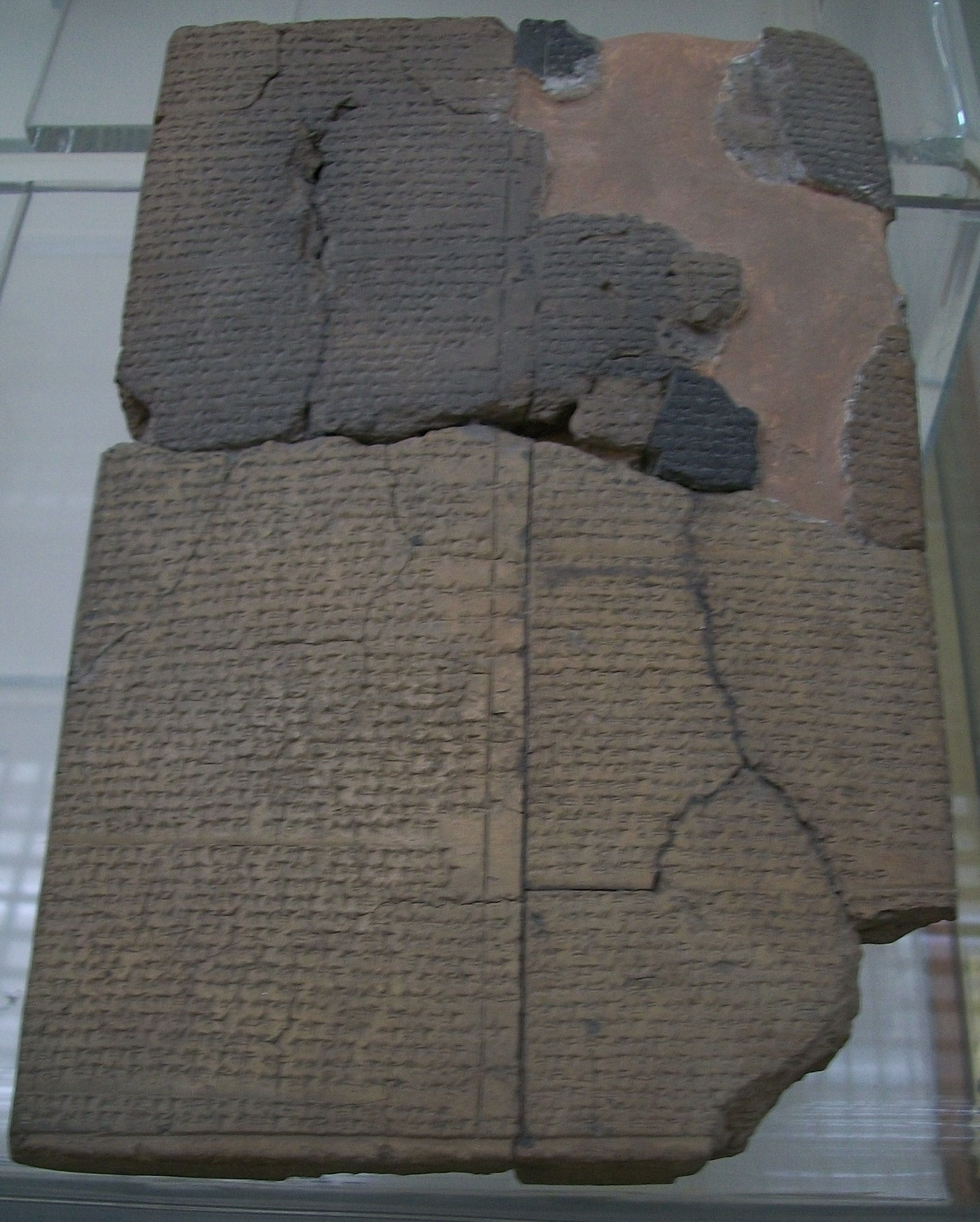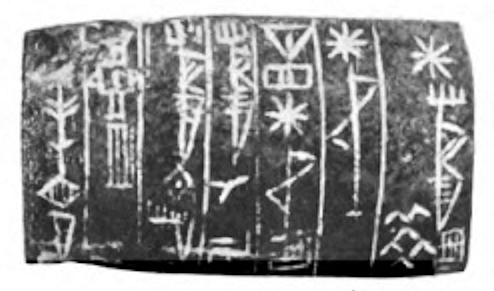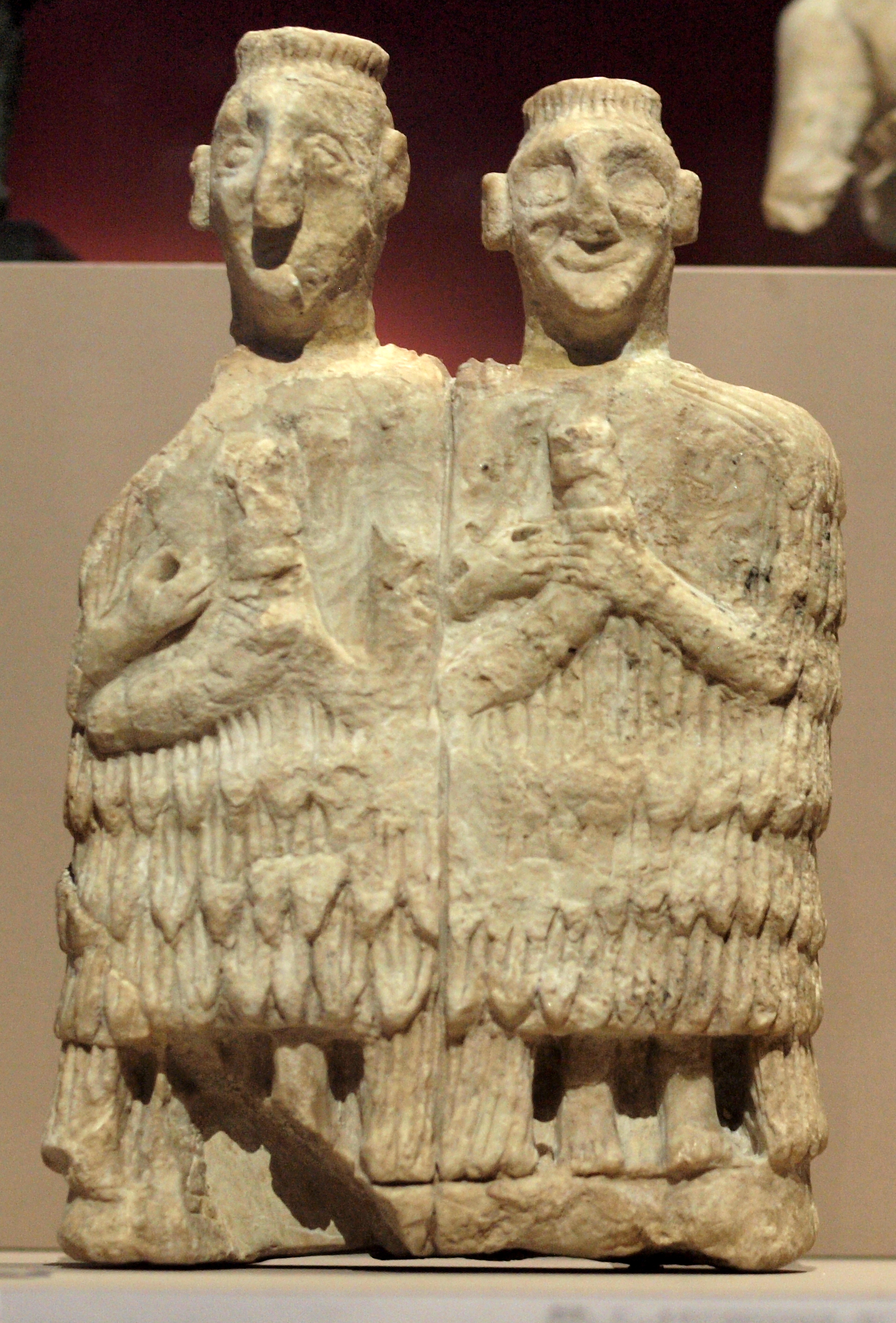|
áļŠattuÅĄili III
Hattusili III (Hittite language, Hittite: "from Hattusa") was king of the Hittite empire (New Kingdom) â1245 BC (middle chronology) or 1267â1237 BC (short chronology timeline)., pp.xiii-xiv Early life and family Much of what is known about the childhood of Hattusili III is gathered from a biographical account, written on a stone tablet during his reign, referred to as the ''Apology''. Hattusili III was born the youngest of four children to the Hittite king Mursili II and queen Gassulawiya. According to Hattusili III himself, he was an ill and sickly child who was initially expected not to survive to adulthood. Hattusili III credited the goddess Inanna, Ishtar with saving his life during this period, and would remain an ardent patron of Ishtar indefinitely. Due to his place as the youngest son, Hattusili III did not become king after the death of his father. Instead his older brother Muwatalli II, Muwattalli II ascended the throne. Before becoming king, Hattusili III mar ... [...More Info...] [...Related Items...] OR: [Wikipedia] [Google] [Baidu] |
List Of Hittite Kings
The dating and sequence of Hittite Empire, Hittite kings is compiled by scholars from fragmentary records, supplemented by the finds in Hattusa, áļŠattuÅĄa and other administrative centers of cuneiform tablets and more than 3,500 seal impressions providing the names, titles, and sometimes ancestry of Hittite kings and officials. Given the nature of the source evidence, reconstructions vary among scholars, and the dating or even existence, relationships and sequence of some kings is disputed at several point within Hittite history. The list below indicates instances of such debates, with references. All dates in the list below should be considered approximate. Hittite Chronology is almost completely dependent on synchronisms with Chronology of the ancient Near East, other ancient Near Eastern countries. Such synchronisms are few and usually open to interpretation. Mursili I, MurÅĄili I is believed to have overthrown Samsu-Ditana, Samsu-ditÄna, the last king of the Old Babylonian E ... [...More Info...] [...Related Items...] OR: [Wikipedia] [Google] [Baidu] |
Inanna
Inanna is the List of Mesopotamian deities, ancient Mesopotamian goddess of war, love, and fertility. She is also associated with political power, divine law, sensuality, and procreation. Originally worshipped in Sumer, she was known by the Akkadian Empire, Akkadians, Babylonian religion, Babylonians, and Assyrians as Ishtar. Her primary title is Queen of Heaven (antiquity), "the Queen of Heaven". She was the patron goddess of the Eanna temple at the city of Uruk, her early main religious center. In archaic Uruk, she was worshipped in three forms: morning Inanna (Inana-UD/hud), evening Inanna (Inanna sig), and princely Inanna (Inanna NUN), the former two reflecting the phases of her associated planet Venus. Her most prominent symbols include the Lion of Babylon, lion and the Star of Ishtar, eight-pointed star. Her husband is the god Dumuzid (later known as Tammuz), and her (attendant) is the goddess Ninshubur, later conflated with the male deities Ilabrat and Papsukkal. Inanna ... [...More Info...] [...Related Items...] OR: [Wikipedia] [Google] [Baidu] |
Hittite King
The dating and sequence of Hittite kings is compiled by scholars from fragmentary records, supplemented by the finds in áļŠattuÅĄa and other administrative centers of cuneiform tablets and more than 3,500 seal impressions providing the names, titles, and sometimes ancestry of Hittite kings and officials. Given the nature of the source evidence, reconstructions vary among scholars, and the dating or even existence, relationships and sequence of some kings is disputed at several point within Hittite history. The list below indicates instances of such debates, with references. All dates in the list below should be considered approximate. Hittite Chronology is almost completely dependent on synchronisms with other ancient Near Eastern countries. Such synchronisms are few and usually open to interpretation. MurÅĄili I is believed to have overthrown Samsu-ditÄna, the last king of the Amorite dynasty of Babylon, but the dating of this event varies widely across chronological scheme ... [...More Info...] [...Related Items...] OR: [Wikipedia] [Google] [Baidu] |
History Of The Hittites
The Hittites () were an Anatolian Indo-European people who formed one of the first major civilizations of the Bronze Age in West Asia. Possibly originating from beyond the Black Sea, they settled in modern-day Turkey in the early 2nd millennium BC. The Hittites formed a series of polities in north-central Anatolia, including the kingdom of Kussara (before 1750 BC), the Kanesh or Nesha Kingdom (â1650 BC), and an empire centered on their capital, Hattusa (around 1650 BC). Known in modern times as the Hittite Empire, it reached its peak during the mid-14th century BC under Å uppiluliuma I, when it encompassed most of Anatolia and parts of the northern Levant and Upper Mesopotamia, bordering the rival empires of the Hurri-Mitanni and Assyrians. Between the 15th and 13th centuries BC, the Hittites were one of the dominant powers of the Near East, coming into conflict with the New Kingdom of Egypt, the Middle Assyrian Empire, and the Empire of Mitanni. By the 12th century BC ... [...More Info...] [...Related Items...] OR: [Wikipedia] [Google] [Baidu] |
Arzawa
Arzawa was a region and political entity in Western Anatolia during the Late Bronze Age. In Hittite texts, the term is used to refer both to a particular kingdom and to a loose confederation of states. The chief Arzawan state, whose capital was at Apasa, is often referred to as ''Arzawa Minor'' or ''Arzawa Proper'', while the other Arzawa lands included Mira, Hapalla, Wilusa, and the Seha River Land. Arzawa is known from contemporary texts documenting its political and military relationships with Egypt and the Hittite Empire. The kingdom had a tumultuous relationship with the Hittites, sometimes allied with them but other times opposing them, in particular in concert with Mycenaean Greece which corresponds to Ahhiyawa of the Hittite sources. During the Amarna Period, Arzawa had achieved sufficient independence that Egypt opened direct diplomatic relations, addressing the Arzawan king Tarhuntaradu as "great king", a title reserved for peers. However, the kingdom was fully ... [...More Info...] [...Related Items...] OR: [Wikipedia] [Google] [Baidu] |
Tawagalawa Letter
The Tawagalawa letter (Catalogue des Textes Hittites, CTH 181) is a fragmentary Hittite text from the mid 13th century BC. It is notable for providing a window into relations between Hittites and Mycenaean Greece, Greeks during the Late Bronze Age and for its mention of a prior disagreement concerning a city called Wilusa, generally identified with the archaeological site of Troy. Contents The Tawagalawa letter was written by a Hittite king to a king of Ahhiyawa around 1250 BC or earlier. The author is generally identified as Hattusili III, though some scholars have argued that it was written by Muwatalli II. Since the surviving text is fragmentary, the identities of the author and addressee are not known for certain, and nothing can be inferred about the identity of its addressee. In the letter, the Hittite king seeks cooperation from the Ahhiyawan king in suppressing anti-Hittite activity in Western Anatolia. His particular concern was the activity of a warlord named Piyamarad ... [...More Info...] [...Related Items...] OR: [Wikipedia] [Google] [Baidu] |
EgyptianâHittite Peace Treaty
The EgyptianâHittite peace treaty, also known as the Eternal Treaty or the Silver Treaty, was concluded between Ramesses II of the Egyptian Empire and áļŠattuÅĄili III of the Hittite Empire around 1259 BC. It is the oldest known surviving peace treaty (though the much older treaty between Ebla and Abarsal may be the earliest recorded diplomatic treaty in human history) and the only one from the ancient Near East for which versions from each party have survived. Though it is sometimes called the Treaty of Kadesh, the text itself does not mention the Battle of Kadesh, which took place around 1274 BC. Both sides of the treaty have been the subject of intensive scholarly study. Despite being agreed upon by the Egyptian pharaoh and the Hittite king, it did not bring about an enduring peace; in fact, "an atmosphere of enmity between Hatti and Egypt lasted many years" until the eventual treaty of alliance was signed. Egypt's Kadesh inscriptions provide the best documented descript ... [...More Info...] [...Related Items...] OR: [Wikipedia] [Google] [Baidu] |
Kurunta
Kurunta () or Kurunti(ya) is the Hittite mythology, Hittite stag god and a tutelary god of the countryside. Name The name of Kurunta is spelled as (DEUS)CERVUS in Hieroglyphic Luwian, or as dKAL in Hittite cuneiform. As dKAL has to be read as dLAMMA following Assyriological tradition, many times it is directly transliterated as dLAMMA instead. Kurunta was attested as Runti(ya) in the first millennium BC, although there is a possibility that the loss of the initial syllable may have occurred during the time of the Hittites, Hittite New Kingdom/Empire period. Character and iconography Kurunta is a tutelary deity, as seen from the usage of the sign dKAL which corresponds to dLAMMA. However, there are still differences between the Hittite dKAL deities and the Mesopotamian dLAMMA deities, such as that KAL and LAMMA have different meanings, and Archi adds that unlike the Mesopotamian dLAMMA the Hittite dKAL deities were always considered male. His sacred animal is the stag. A ... [...More Info...] [...Related Items...] OR: [Wikipedia] [Google] [Baidu] |
Nerik
Nerik ( Hittite: ''Nerik(ka)''"Nerik(ka)." ''Reallexikon der Assyriologie.'') was a Bronze Age settlement to the north of the Hittite capitals Hattusa and Sapinuwa, probably in the Pontic region. Since 2005â2009, the site of Nerik has been identified as OymaaÄaç HÃķyÞk, on the eastern side of the KÄązÄąlÄąrmak River, northwest of VezirkÃķprÞ. History It was occupied in the Middle Bronze and Late Bronze. The Hittites held it as sacred to a Storm-god who was the son of WuruÅĄemu, Sun-goddess of Arinna. The weather god is associated or identified with Mount Zaliyanu near Nerik, responsible for bestowing rain on the city. Middle Bronze Hittite Old Kingdom Nerik was founded by Hattic language speakers as Narak; in the Hattusa archive, tablet CTH 737 records a Hattic incantation for a festival there. Under Hattusili I, the Nesite-speaking Hittites took over Nerik. They maintained a spring festival called " Puruli" in honor of the Storm-god of Nerik. In it, the celebrants ... [...More Info...] [...Related Items...] OR: [Wikipedia] [Google] [Baidu] |
TaráļŦuntaÅĄÅĄa
TaráļŦuntaÅĄÅĄa ( and : ) was a Bronze Age city in south-central Anatolia (modern-day Turkey) mentioned in contemporary documents. Its location is unknown. The city was the capital of the Hittite Empire for a time and later became a regional power in its own right. The kingdom controlled by the city is known by the same name and its approximate borders are known from texts. Location In 2019, a previously little-researched site at TÞrkmen-KarahÃķyÞk, near Ãumra on the Konya Plain, was investigated and put forward as the site of TaráļŦuntassa by Michele Massa, James Osborne and Christoph Bachhuber. Previously proposed locations include Konya, Sirkeli HÃķyÞk in Cilicia, the vicinity of Kayseri, and Kilise Tepe (formerly known as Maltepe). KÄązÄąldaÄ has been suggested based on the idea that Hartapus was possibly a ruler of TaráļŦuntassa. Another proposed location is at the site of MeydancÄąk Castle and that TaráļŦuntassa was another name for Hulaya River Land. History New H ... [...More Info...] [...Related Items...] OR: [Wikipedia] [Google] [Baidu] |
Hattusa
Hattusa, also HattuÅa, áļŠattuÅĄa, Hattusas, or Hattusha, was the capital of the Hittites, Hittite Empire in the late Bronze Age during two distinct periods. Its ruins lie near modern BoÄazkale, Turkey (originally BoÄazkÃķy) within the great loop of the KÄązÄąlÄąrmak River (Hittite: ''Marashantiya''; Greek: ''Halys River, Halys''). Charles Texier brought attention to the ruins after his visit in 1834. Over the following century, sporadic exploration occurred, involving different archaeologists. The Deutsche Orient-Gesellschaft, German Oriental Society and the German Archaeological Institute began systematic excavations in the early 20th century, which continue to this day. Hattusa was added to the List of World Heritage Sites in Turkey, UNESCO World Heritage Site list in 1986. History The earliest traces of settlement on the site are from the sixth millennium BC during the Chalcolithic period. Toward the end of the 3rd Millennium BC the Hattian people established a settle ... [...More Info...] [...Related Items...] OR: [Wikipedia] [Google] [Baidu] |
Ishtar
Inanna is the List of Mesopotamian deities, ancient Mesopotamian goddess of war, love, and fertility. She is also associated with political power, divine law, sensuality, and procreation. Originally worshipped in Sumer, she was known by the Akkadian Empire, Akkadians, Babylonian religion, Babylonians, and Assyrians as Ishtar. Her primary title is Queen of Heaven (antiquity), "the Queen of Heaven". She was the patron goddess of the Eanna temple at the city of Uruk, her early main religious center. In archaic Uruk, she was worshipped in three forms: morning Inanna (Inana-UD/hud), evening Inanna (Inanna sig), and princely Inanna (Inanna NUN), the former two reflecting the phases of her associated planet Venus. Her most prominent symbols include the Lion of Babylon, lion and the Star of Ishtar, eight-pointed star. Her husband is the god Dumuzid (later known as Tammuz), and her (attendant) is the goddess Ninshubur, later conflated with the male deities Ilabrat and Papsukkal. Inanna ... [...More Info...] [...Related Items...] OR: [Wikipedia] [Google] [Baidu] |





